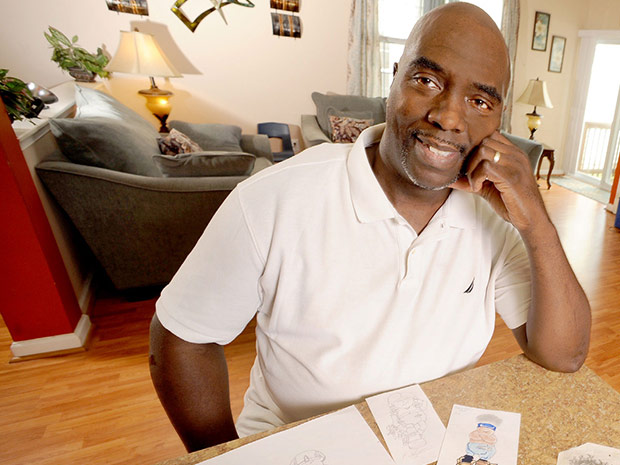
Collaboration Enhances Outcomes, Improves Patient Experience
David Johnson was always active … he played sports, lifted weights and was constantly on the go. So when he began to feel sluggish and short of breath several years ago, he was obviously concerned.
But it was not until he needed to be hospitalized that he found out what was wrong. He had congestive heart failure (CHF), a condition that usually develops after years of heart problems.
“I was only 43 years old at the time and was very surprised,” Johnson says. “I hadn’t had any heart problems before and the doctors didn’t know why I developed the condition so suddenly.”
Johnson was fortunate to be placed under the care of specialists at MedStar Heart & Vascular Institute at MedStar Union Memorial Hospital. Heart failure is a very common disease that affects millions of individuals with about 550,000 new cases diagnosed in the United States every year. It is also the number-one reason for patient admissions to hospitals.
CHF is a chronic condition and has several risk factors including persistent high blood pressure, heart attacks, disease of the heart valves, certain viral infections or inflammation of the heart muscle. Although these conditions are all different, they may lead the heart down the path of progressive scarring and damage which compromises its ability to fill and squeeze. CHF generally worsens over time, and if left untreated, can result in additional complications, even death. It may also affect a person’s quality of life, making it difficult to participate in daily activities.
Johnson was prescribed medications to improve his symptoms, which made him feel better for a while. But as the disease progresses and the heart’s ability to work worsens, traditional medications used to treat heart failure are often no longer effective. “With a wife, twin 5-year-olds and a mother-in-law with dementia living in my home in Middle River, there’s a lot going on. I wanted to get my life back,” Johnson says.
The specialists at MedStar Heart & Vascular Institute had a solution. Having years of previous experience working with the MedStar Advanced Heart Failure Program at MedStar Heart & Vascular Institute at MedStar Washington Hospital Center in Washington, D.C., the team thought Johnson might be an ideal candidate for a left ventricular assist device (LVAD).
An LVAD is a small pump that helps circulate the blood when the heart becomes too weak to do its job effectively. The MedStar Advanced Heart Failure Program offers an extensive array of these devices, which are generally used in two different situations.
For patients like David, who may be candidates for a heart transplant, an LVAD can serve as a bridge-to-transplant—a temporary assistive therapy until a suitable donor heart becomes available. For patients who do not qualify for a heart transplant, or simply do not want one, an LVAD can be implanted as a long-lasting treatment since the pumps are designed to last for many years.
Johnson is looking forward to the future after being implanted with an LVAD, a temporary therapy to help his heart work effectively until a donor heart becomes available.
The specialists at MedStar Heart & Vascular Institute began the process of evaluating Johnson and ultimately preparing him for the surgery required to implant the LVAD—a surgery performed at MedStar Washington Hospital Center. In March, at the age of 48, Johnson had an LVAD implanted in his left ventricle, the bottom left chamber of the heart. The LVAD is connected to a small computer called a controller that alerts him when the batteries need to be changed and is worn in a pack around his waist.
A few weeks later, Johnson was already back at home in Middle River, gaining his strength and leading a nearly normal life. He continues to see care team in Baltimore for his follow-up care and other support services, which makes getting the care he needs much more convenient.
Ensuring that the most advanced care is easily accessible greatly improves the patient experience. He plans to take this care model to the next level by establishing an outpatient LVAD clinic in Baltimore soon.
In the meantime, Johnson is delighted to be able to do many of the things he struggled with for so long, though he misses swimming—something he can’t do because the LVAD controller can’t get wet. “I feel great but am still looking forward to getting a heart so I can swim,” he says. He is also laying the groundwork to start a foundation that will serve as a resource to people wanting to know more about LVADs.
In the past, most people with David’s condition would eventually be confined to a hospital bed. But with advances in medical technology, patients like him can now resume a nearly normal life.













